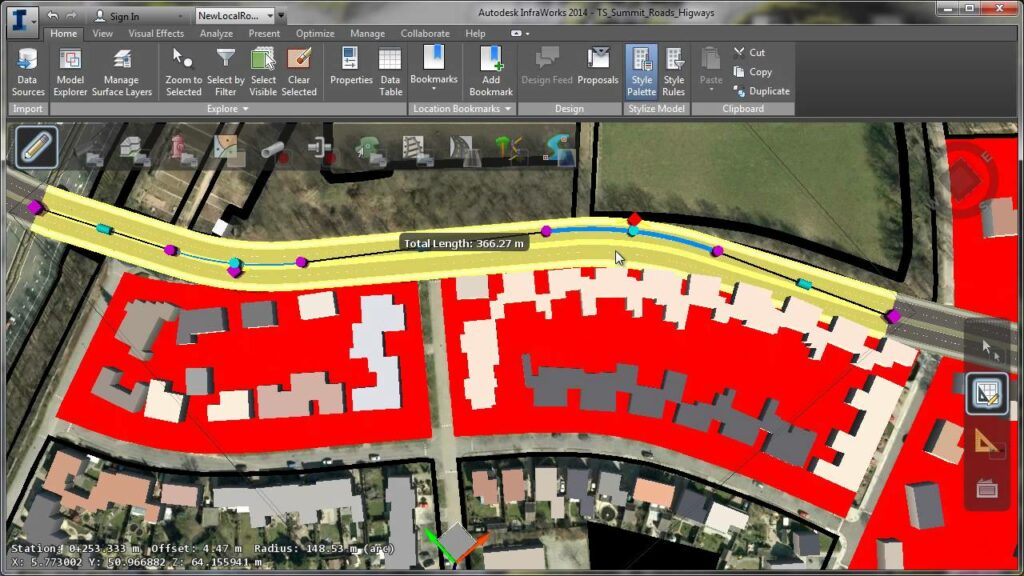Mastering Cost Estimation and Budgeting in InfraWorks: A Comprehensive Guide

Introduction: Cost estimation and budgeting are critical components of infrastructure projects, guiding decision-making, ensuring financial feasibility, and facilitating project planning and execution. Autodesk InfraWorks offers powerful tools and capabilities for performing cost estimation and budgeting, enabling engineers, planners, and project stakeholders to assess project costs, develop budgets, and make informed decisions throughout the project lifecycle. This comprehensive guide aims to provide a detailed overview of how to perform cost estimation and budgeting in InfraWorks, offering step-by-step insights and expert tips to master this essential aspect of infrastructure development.
Understanding Cost Estimation and Budgeting in InfraWorks: Cost estimation involves predicting the expenses associated with various aspects of an infrastructure project, including design, construction, materials, labor, equipment, and overhead costs. Budgeting, on the other hand, involves allocating financial resources to different project activities, ensuring that expenditures are planned and managed within predetermined limits. Cost estimation and budgeting in InfraWorks enable users to quantify project costs, analyze cost drivers, and develop realistic budgets to support project planning, decision-making, and control.
Key Features of Cost Estimation and Budgeting in InfraWorks: InfraWorks offers a range of features and tools tailored for cost estimation and budgeting, including:
- Quantity Takeoff: InfraWorks provides tools for generating quantity takeoffs from 3D models, enabling users to quantify the materials, labor, and equipment required for project construction.
- Cost Item Libraries: The software includes libraries of predefined cost items, such as materials, labor rates, and equipment costs, that users can use to streamline cost estimation and budgeting.
- Cost Analysis: InfraWorks offers tools for analyzing project costs, including cost breakdowns, cost comparisons, and cost variance analysis, enabling users to identify cost-saving opportunities and manage project finances effectively.
- Budget Management: The software supports budget management functionalities, allowing users to allocate financial resources to different project activities, track expenditures, and monitor budget performance in real time.
Performing Cost Estimation and Budgeting in InfraWorks: The process of performing cost estimation and budgeting in InfraWorks involves several key steps, from generating quantity takeoffs to developing project budgets and analyzing cost performance. Here’s a comprehensive guide to performing cost estimation and budgeting in InfraWorks:
- Generate Quantity Takeoffs:
- Start by generating quantity takeoffs from the 3D models of the project within InfraWorks.
- Use the quantity takeoff tools to quantify the materials, labor, and equipment required for each project component, such as roads, bridges, utilities, and buildings.
- Define Cost Items and Rates:
- Define cost items and rates for materials, labor, equipment, and other project expenses using the predefined cost item libraries in InfraWorks.
- Customize cost items and rates based on project-specific requirements, such as regional labor rates, material prices, and equipment rental costs.
- Estimate Project Costs:
- Estimate project costs by applying cost items and rates to the quantities generated from the quantity takeoffs.
- Calculate the total project cost by summing up the costs of individual project components, taking into account any overhead costs, contingencies, or allowances.
- Develop Project Budget:
- Develop a project budget by allocating financial resources to different project activities based on the estimated costs and available funding.
- Break down the budget into cost categories, such as design, construction, permits, land acquisition, and contingencies, to facilitate budget tracking and management.
- Analyze Cost Performance:
- Analyze cost performance throughout the project lifecycle, comparing actual costs against budgeted costs and identifying any discrepancies or variances.
- Use cost analysis tools in InfraWorks to track expenditures, monitor budget performance, and make adjustments as needed to ensure that the project remains within budget constraints.
Best Practices for Cost Estimation and Budgeting in InfraWorks: In addition to following the step-by-step guidelines outlined above, here are some best practices to optimize cost estimation and budgeting in InfraWorks:
- Collaborate with Stakeholders: Engage with project stakeholders, including owners, clients, contractors, and suppliers, throughout the cost estimation and budgeting process to gather input, solicit feedback, and ensure alignment with project goals and objectives.
- Use Accurate Data: Ensure that the data used for cost estimation and budgeting, such as quantity takeoffs, cost item rates, and budget allocations, is accurate, up-to-date, and representative of project conditions to improve the accuracy and reliability of cost estimates and budgets.
- Plan for Contingencies: Include contingencies and allowances in the project budget to account for uncertainties, risks, and unforeseen circumstances that may arise during project execution, ensuring that there is flexibility to accommodate changes and mitigate potential cost overruns.
- Monitor Budget Performance: Establish robust budget monitoring and reporting mechanisms to track expenditures, monitor budget performance, and identify any deviations from the planned budget, enabling timely intervention and corrective actions to control costs and ensure financial accountability.
- Leverage Technology: Leverage the advanced features and capabilities of InfraWorks, such as quantity takeoff tools, cost item libraries, and cost analysis functionalities, to streamline cost estimation and budgeting workflows, improve efficiency, and enhance decision-making.
Conclusion: Performing cost estimation and budgeting is essential for the successful planning, execution, and control of infrastructure projects, enabling stakeholders to allocate financial resources effectively, manage project finances efficiently, and achieve project objectives within predetermined constraints. By following the comprehensive guide and best practices outlined above, engineers, planners, and project stakeholders can master the process of performing cost estimation and budgeting in InfraWorks, leveraging its powerful tools and capabilities to quantify project costs, develop realistic budgets, and monitor cost performance throughout the project lifecycle. With its intuitive interface, robust functionalities, and advanced analysis tools, InfraWorks empowers users to optimize project finances, minimize financial risks, and deliver successful infrastructure projects that meet the needs of communities and promote sustainable development.




